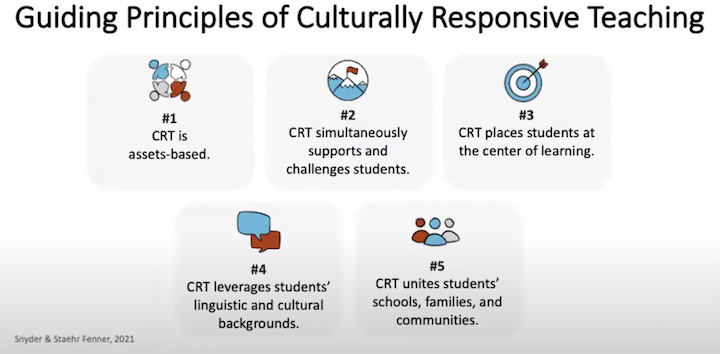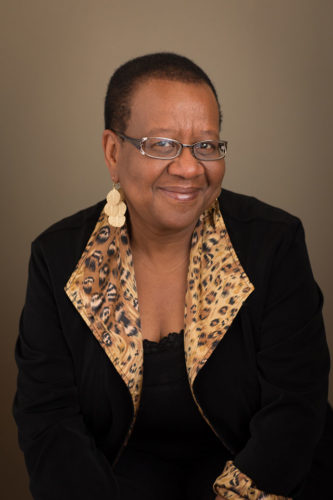Culturally Responsive Teach Out Reflection
For this Teach Out Project we decided to look into the culturally responsive teaching pedagogy. We currently work in the Central Falls School District. Our student population is composed of 52% Hispanic, 18% Black or African American, 17% white, and 10% American Indian students*. Our educator population is composed of 15% Hispanic, 4% Black or African American, and 81% white teachers*. We feel that the disparity between our student population and educator population can, and does, create a lack of true engagement and success academically and socially within our schools. For this reason we feel it is important to create a presentation for our faculty and staff that addresses Culturally Responsive Teaching and how to implement it within all classrooms/curriculums. As a district we are looking at doing diversity training and we feel this would be a good way to teach how to put these PDs into action.
Through this course we have been exposed to some really important readings that deal with various issues like Special Education, MLLs, LGTBQ+, and colorblindness. What really spoke to us, beyond all the issues being important, is the culturally responsive teaching. Culturally responsive teaching would benefit all students in these various groups, and would really help our students at Calcutt Middle School be more engaged in learning. After reading Delpit, it seemed like a great idea to create a PD to help teachers tackle culturally responsive teaching in their classrooms, a lesson at a time. Not only did I feel like it was important, but based on the RI Survey Works results for SY22 students stated that they felt unsafe and unconnected to our school and in the classroom. Kate and I realized that it would be beneficial to other educators to have support in creating lessons that will be culturally responsive and inclusive.
In 2020 and later 2021, during the pandemic, our district decided to respond to the police brutality and racial divide of our country by introducing PD sessions called “Diversity Talks”. Kate and I have both discussed how uncomfortable these conversations were, especially since they were all virtual and people can get very comfortable with being faceless voices. A few interactions left me wondering why the message was not clear enough, and also why were people so defensive? I know self reflection can be difficult, admitting that we have biases and prejudices can be difficult, but it felt like I was in the middle of a Facebook or Twitter fight that I really did not want to participate in.
During this class we were introduced to Lisa Delpit. In the article, The Silenced Dialogue by Lisa Delpit, five aspects of power are outlined and discussed in terms of privilege within the United States. Delpit argues that students must be explicitly taught "formal conventions,” as well as when it is appropriate to use this language, AND should be able to practice their own linguistics. She argues that in order to both celebrate our students' diverse backgrounds and cultures, and to prepare our students for success in a white-dominant America, we should directly instruct our students about when and where it is best to use the two different linguistic styles. She also mentions that this change must be initiated by the people in power in order to support real change in our society. This article connects to culturally responsive teaching practices because it calls for educators to celebrate our student’s diversities while also teaching them how to succeed in the current social scheme. Delpit also directly addresses how cultural differences, such as what dictates authority, can create misunderstandings and frustrations for teachers and students alike. While many teachers of middle-class cultures may assume they have authority because they hold the title of teacher, students from different cultural backgrounds may expect the authority to be earned. These varying beliefs can cause tension within the classroom and typically lead to over disciplining students of color. Delpit’s voice really helped us figure out what would be a great teach out lesson for our faculty.
Another classmate posted an article by Enid Lee. In the article, Taking Multicultural, Anti-Racist Education Seriously by Enid Lee, the topic of multicultural education is defined and explored. The article states that multicultural education, “equips students, parents, and teachers with the tools needed to combat racism and ethnic discrimination, and to find ways to build a society that includes all people on an equal footing” (Lee). Lee shares that multicultural education and curriculum must directly address discrimination and cultures in order to promote change towards equity. The article explores different stages to move towards a true anti-racist education. The first is to make surface changes, such as signs in multiple languages. The second stage is to create units of study that explore discrimination and different cultures. Although this state only incorporates cultural diversity in small pockets, it is a stepping stone to the next stage. The third stage is to make structural changes that allow for multiculturalism to be discussed in all of the current curricular units. This is meant to be intertwined with the units throughout the school year and not just one week or month of instruction. The final stage is coined the social stage. This final stage is where changes can start occurring outside of the classroom. The hope is that students, and educators, will use their knowledge of the inequities that have occurred, and still do occur, in our country and go enact change within their communities. This could look like a letter-writing campaign to media companies for example. Overall, Enid Lee explains that multicultural education is the pathway towards acknowledging the systems of oppression that are held within the United States and in turn changing these systems.
Based on these two articles we really wanted to see if we could create a PD that would help our faculty become more comfortable and familiar with responsive teaching in daily lessons. We want to support teacher growth, and feel that as teachers in the same school we can help support through our knowledge of the various curriculum. As Deborah A. Harmon pointed out in Culturally Responsive Teaching Through a Historical Lens: Will History Repeat Itself? “In 1989, Irvine wrote about the lack of cultural synchronization between teachers and African American students and the negative impact on academic achievement Eleven years later, she described culturally responsive teaching as student-centered, having the power to transform the curriculum, fostering critical problem solving, and focusing on building relationships with students, families, and communities (Irvine & Armento, 2001). Irvine (2002) further explained that the curriculum is transformed with culturally responsive teaching because the subject matter is viewed from multiple perspectives, including the lens of oppressed and disenfranchised groups.” We want our teachers to realize that this isn’t about creating new lessons or having to fit culturally responsive teaching in every minute of every lesson. We want to encourage teachers to start small and work their way up as they learn more, much like we did during this class.



/cloudfront-us-east-1.images.arcpublishing.com/pmn/JQNLNQFT2NACVNGULKGXRQZS2E.jpg)
No comments:
Post a Comment